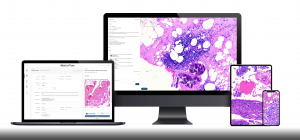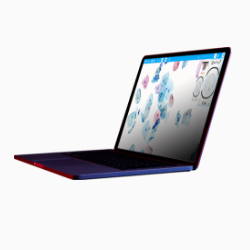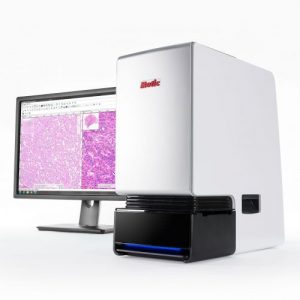Transforming Rural Healthcare in Ghana with Digital Pathology

Dr. Nagendra is demonstrating the Motic Digital Pathology Platform.
In the heart of rural Ghana, where access to advanced medical care is a luxury few can afford, a quiet revolution is transforming lives. The International Health and Development Network (IHDN), led by Dr. Edem Agamah, has been working tirelessly to bring quality healthcare to underserved communities. By integrating digital pathology solutions in 2023, IHDN has been able to bring timely and accurate cancer diagnoses to a region where such services were virtually nonexistent, significantly enhancing healthcare delivery for underserved communities.
Overcoming Barriers: Ghana’s Healthcare Challenges
Ghana’s healthcare system, despite efforts to improve access, remains heavily burdened. With a population of over 33 million, the country has only around 30 practicing pathologists, the vast majority of whom work in urban hospitals. For those living in rural areas, the reality is stark—diagnostic services are either unavailable or come with long delays that can mean the difference between life and death.
Histology, a fundamental part of cancer diagnosis and treatment, is an especially neglected field. Across the country, surgical pathology specimen volumes remain shockingly low, with fewer than 20,000 cases processed annually. Many surgeons, discouraged by the lack of reliable pathology services, opt to skip biopsies altogether, making early cancer detection nearly impossible.
A Vision to Change Rural Healthcare
Dr. Edem Agamah, a Ghanaian hematologist/oncologist and professor at Southern Illinois University School of Medicine, saw these struggles firsthand. Determined to make a difference, he founded the International Health and Development Network (IHDN) in 1996. The organization set up a medical mission in Agbozume, a rural community in Ghana’s Volta region—initially offering healthcare in makeshift settings before expanding into a hospital in 2008.
Even as the IHDN Mission Hospital grew, it faced the same hurdles that plague much of Ghana’s healthcare sector: unreliable medical supply chains, outdated or nonfunctional equipment, and bureaucratic red tape. By 2021, the hospital had become a lifeline for thousands, providing over 37,000 outpatient visits, 3,400 inpatient visits, and 582 childbirth deliveries. Yet, critical gaps remained—particularly in pathology services.
Building a Histology Lab from Scratch
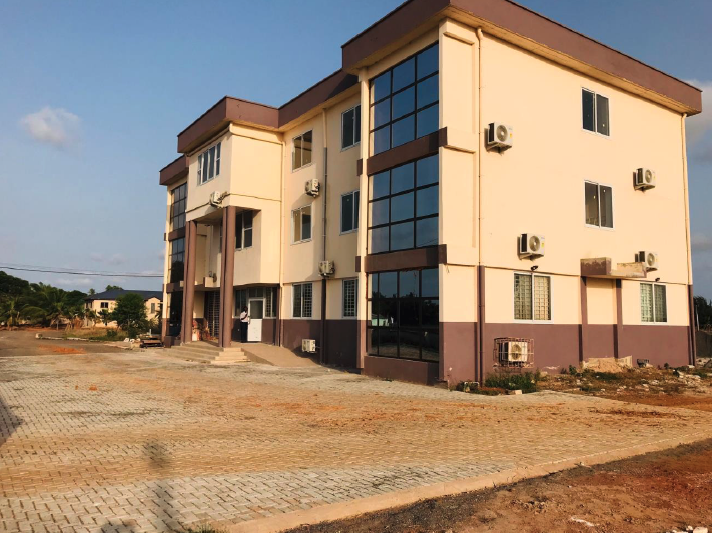
The Histopathology Lab is on the first floor of the Pathology Building Complex.
Recognizing that cancer treatment could never be truly effective without proper diagnostics, Dr. Agamah partnered with Dr. Sanjai Nagendra to launch a histology lab at the hospital. Their mission was clear: bring pathology services closer to the people who needed them most.
Before the integration of digital pathology, IHDN faced seemingly insurmountable challenges in providing pathology services. There was no local pathology lab, which meant there was no structured way to diagnose conditions requiring tissue analysis. Patients with suspicious growths or internal conditions often went undiagnosed, as the infrastructure to process and examine tissue specimens simply did not exist. The organization was facing a number of challenges:
- Severe Diagnostic Delays: Without the ability to examine tissue samples locally, patients either had to seek care elsewhere—an impossible financial burden for most—or wait indefinitely without a confirmed diagnosis.
- Lack of Trained Personnel: Pathologists were virtually nonexistent in rural Ghana, making it difficult to establish any form of pathology service.
- Unfeasible Alternatives: Unlike some hospitals that could afford to send samples abroad for diagnosis, IHDN lacked the resources to do so. Mailing slides internationally was impractical due to logistical challenges, high costs, and long delays in receiving results.
- The Reality of Missed Diagnoses: With no available pathology services, diseases such as breast cancer remained undiagnosed until it was too late. Patients who might have been treated successfully with early detection often succumbed to preventable conditions.
The Role of Motic Digital Pathology Solutions
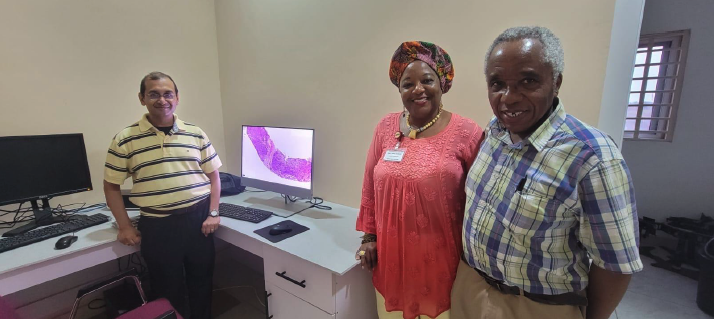
Dr. Agamah and his team are excited about the digital pathology slide scanner.
The integration of Motic’s digital pathology scanner was a game-changer. The MoticEasyScan Pro allows slides to be prepared and scanned in Ghana, with images uploaded to the cloud via MoticFlow. Pathologists like Dr. Nagendra, based thousands of miles away in the U.S., can review the slides in near real-time, providing rapid diagnoses.
"The turnaround time has improved drastically. We can now provide a diagnosis within 24 to 48 hours, compared to weeks before. This is transformative for patient care.”
Dr. Sanjai Nagendra, MD.
A Transformation in Healthcare Delivery
Now, for the first time, digital pathology is allowing patients in rural Ghana to receive a diagnosis within 24 to 48 hours. This speed is especially critical for conditions like breast cancer, where early detection can save lives.
“The technology has allowed us to diagnose and treat cases that would have otherwise gone unnoticed,” says Dr. Nagendra. “In the past year, we’ve identified several cases of breast cancer and other conditions. These diagnoses are giving patients a fighting chance.”
Beyond faster diagnoses, the Motic scanner has also empowered local technicians. Staff members at IHDN’s lab have been trained to prepare slides and operate the scanner, ensuring a sustainable workflow.
The higher capacity of the new building and the employment and training of local staff are vital to the long-term success of the initiative.
Through the pathology lab, we have trained and provided histotechnology jobs to two people in the rural area. This will inspire more young people to pursue this area of healthcare. Patients from the rural area, who have cancer, can now be diagnosed in a timely manner and receive treatment closer to home
Dr. Edem S. Agamah, M.D.
A Vision for the Future
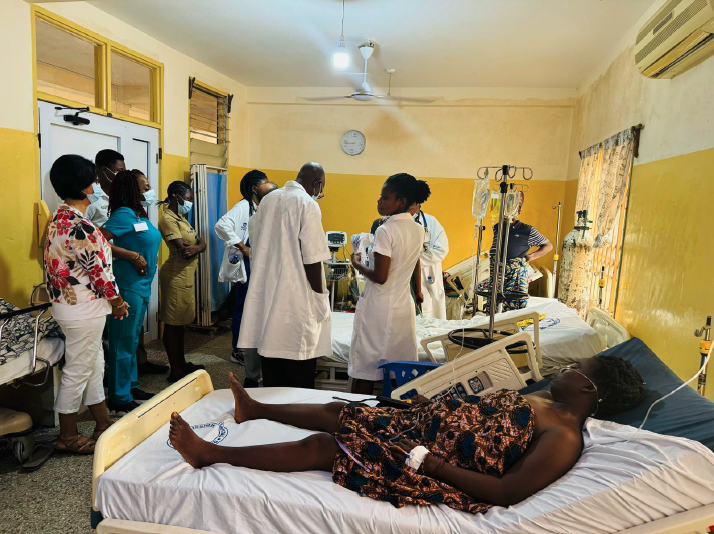
Clinical team on Hospital Rounds at the Emergency ward
Looking ahead, IHDN’s goals are to continue to expand its digital pathology services and to establish a comprehensive cancer center in Ghana. The success of this initiative has proven that advanced healthcare technologies can thrive even in rural settings. Dr. Agamah and his team hope to replicate this model across other underserved areas, bringing modern healthcare to those who need it most.
“What we’ve done here proves that digital pathology can work in rural areas,” says Dr. Nagendra. “The potential to scale this model is enormous. This is just the beginning.”

